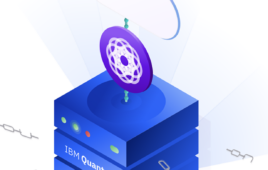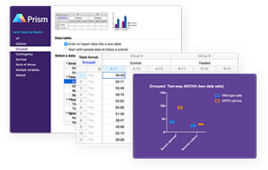Space and astronomy digest: December 2010
This release summarises some of the astronomy and space science events taking place during December, particularly those with UK involvement. It is not intended to be fully comprehensive and dates and times may be subject to change.
7 December: Akatsuki mission reaches Venus
Launched in May 2010, the Japanese Aerospace Exploration Agency (JAXA)’s Akatsuki probe is set to enter orbit around Venus on 7 December. Akatsuki (meaning ‘dawn’) will study the planet from altitudes ranging from 300 to 80 000 km in a mission expected to last two years.
With cameras on the spacecraft able to image the planet from ultraviolet to mid-infrared wavelengths complemented by radio instruments, scientists will use Akatsuki to study high speed winds and search for lightning in the Venusian atmosphere, look for heat from surface rocks and hunt for active volcanoes on the surface.
JAXA / Akatsuki home page
http://www.jaxa.jp/projects/sat/planet_c/index_e.html
CONTACT
JAXA Public Affairs Department
Tel: +81 3 6266 6400
Fax: +81 3 6266 6910
7 December: Launch of Falcon 9 rocket
The next launch of the Falcon 9 commercial space vehicle (delayed several times this year) is set for 7 December, when it is scheduled to carry another prototype Dragon spacecraft into Earth orbit. Earlier this year the rocket, built by Space Exploration Technologies (SpaceX) placed its first payload in orbit.
On this flight the Dragon module should complete several orbits of the Earth, before re-entering the atmosphere en route to a splashdown in the Pacific Ocean off Southern California about four hours after launch in the first journey of its kind for this spacecraft.
The Falcon 9 rocket and its successors, designed with reusable launch stages, are eventually intended to carry the Dragon with astronauts and / or cargo on board, to the International Space Station (ISS). This flight will be the first under the auspices of the NASA Commercial Orbital Transportation Services programme.
SpaceX
http://www.spacex.com
10 December: RAS specialist discussion meeting: Over halfway there: Rosetta at Lutetia
Earlier this year, the European Space Agency’s Rosetta spacecraft performed a close flyby of the 100-km diameter asteroid Lutetia, the largest minor body ever visited by a spacecraft. Rosetta is currently en route to a rendezvous with comet 65P/Churyumov-Gerasimenko in spring 2014, culminating in the touchdown of its lander Philae onto the surface of the comet in November 2014.
On 10 December, astronomers and space scientists will gather at the Royal Astronomical Society for a conference on the Rosetta mission. The first results from the Lutetia flyby will be presented at the meeting, where the scientists will also discuss plans and prospects for the cometary encounter.
Bona fide members of the media who wish to attend this meeting should present their credentials at the reception desk of the RAS for free admission.
Meeting programme
http://www.ras.org.uk/images/stories/ras_pdfs/meetings2010-2011/20101210_RAS_Meeting_Programme.pdf
RAS events and meetings
http://www.ras.org.uk/events-and-meetings
CONTACT
Robert Massey (details below)
10 December: RAS specialist discussion meeting: Testing gravity in the new decade: Radio pulsars, astrometry and gravitational waves
Astronomers and physicists will gather at the Geological Society on 10 December, for a conference on the future of experimental gravitation and observational gravitational physics.
Although Einstein’s theory of General Relativity (which helps describe gravity) has passed every experimental test so far with flying colours, a number of instruments and observations are promising to put the theory under intense scrutiny over the next decade. Observations of radio pulsars with the Square Kilometre Array and its precursors, precision astrometry with the GAIA space observatory and the expected direct detection of gravitational waves with ground based instruments (Advanced LIGO and Virgo) and the future Laser Interferometer Space Antenna are likely to produce a step change in the field.
The meeting will bring together a broad range of experts in optical, radio and gravitational wave astronomy and theoretical physics to discuss expected results, synergies and complementary work in the common quest to understand gravity.
Bona fide members of the media who wish to attend this meeting should present their credentials at the reception desk of the Geological Society for free admission.
Meeting programme
http://www.ras.org.uk/images/stories/ras_pdfs/meetings2010-2011/20101210_RAS_Meeting_Programme.pdf
RAS events and meetings
http://www.ras.org.uk/events-and-meetings
10 December: Piers Sellers addresses RAS: “Getting to orbit and staying there”
Delegates at the Ordinary Meeting of the Royal Astronomical Society on 10 December will hear an address from UK-born Space Shuttle astronaut Dr Piers Sellers. A graduate of the University of Edinburgh who completed his PhD at the University of Leeds, Dr Sellers is a veteran of three Shuttle missions. At the Meeting he will describe mission STS-132, the final flight of the Shuttle Atlantis and one of the last few missions involved in the assembly of the ISS.
On his Atlantis flight, Dr Sellers carried the Jackson-Gwilt Medal of the RAS. At the 10 December Meeting, he will formally present the Medal to RAS President Professor Roger Davies.
Summary of Dr Sellers’ talk
http://www.ras.org.uk/images/stories/ras_pdfs/meetings2010-2011/20101210%20-%20piers%20sellers%20talk.pdf
CONTACT
Robert Massey (details below)
13-14 December: Maximum of Geminid meteor shower
The Geminid meteor shower is predicted to reach its peak at 1100 GMT on the morning of 14 December. Meteors (or ‘shooting stars’) are the result of small particles entering the Earth’s atmosphere at high speed, heating up and then disintegrating. The superheated air around them appears as a short-lived streak of light that quickly fades from view.
In this shower the meteors appear to emanate from a point in the constellation of Gemini, hence the name Geminid, and are associated with the asteroid Phaethon, suspected to be an extinct comet. This year the peak of the shower is at first quarter Moon, so its light will wash out the fainter meteors during the evening of 13 December. The best potential view will be after 0030 local time, in the early hours of 14 December, when the Moon will have set and its light will no longer interfere with the view. At that time, with a clear sky and at sites far away from the lights of towns and cities, it may be possible to see more than 100 meteors each hour.
IMO page on Geminids
http://www.imo.net/calendar/2010#gem
CONTACT
Robert Massey (details below)
14 December: RAS lunchtime lecture: the universe of galaxies
Roger Davies, Philip Wetton Professor of Astrophysics at Oxford University and President of the Royal Astronomical Society, will give the RAS public lecture at 1300 GMT on 14 December.
In his lecture Professor Davies will explore the spectacular and varied nature of galaxies, the systems that contain the vast majority of the stars in the observable universe.
He will also show how Edwin Hubble measured the distances to galaxies and discovered the expanding Universe and how the first clues to the existence of dark matter emerged by weighing galaxies. Finally, Professor Davies will look at the rare collisions between galaxies found in today’s universe and speculate how these may have produced the zoo of galaxies we see around us today.
RAS events and meetings
http://www.ras.org.uk/events-and-meetings
CONTACT
Robert Massey (details below)
17 December: Launch of Discovery to International Space Station (ISS)
The next scheduled launch window for the final flight (STS-133) of the Discovery Space Shuttle opens on 17 December. Discovery is set to launch from Kennedy Space Center in Florida, carrying seven astronauts into orbit to continue the construction of the ISS. Over the course of the 11 day mission, the crew will carry out 2 spacewalks, during which they will attach equipment including the Leonardo Permanent Multipurpose Module for storage, a science experiment platform and a navigation sensor. Inside Leonardo is the Robonaut R2, a humanoid robot primarily designed to teach engineers how robots behave in the absence of gravity.
NASA Shuttle page
http://www.nasa.gov/mission_pages/shuttle/main/index.html
CONTACT
John Yembrick, NASA HQ
Tel: + 1 202 358 1100
Email: [email protected]
All month: December’s night sky
Information on stars, planets, comets, meteor showers and other celestial phenomena is available from the British Astronomical Association (BAA).
BAA
http://www.britastro.org
BAA Sky Notes: December and January
http://britastro.org/journal/pdf/120-6skynotes.pdf




